Digital Marketing New Year's Resolutions for 2023
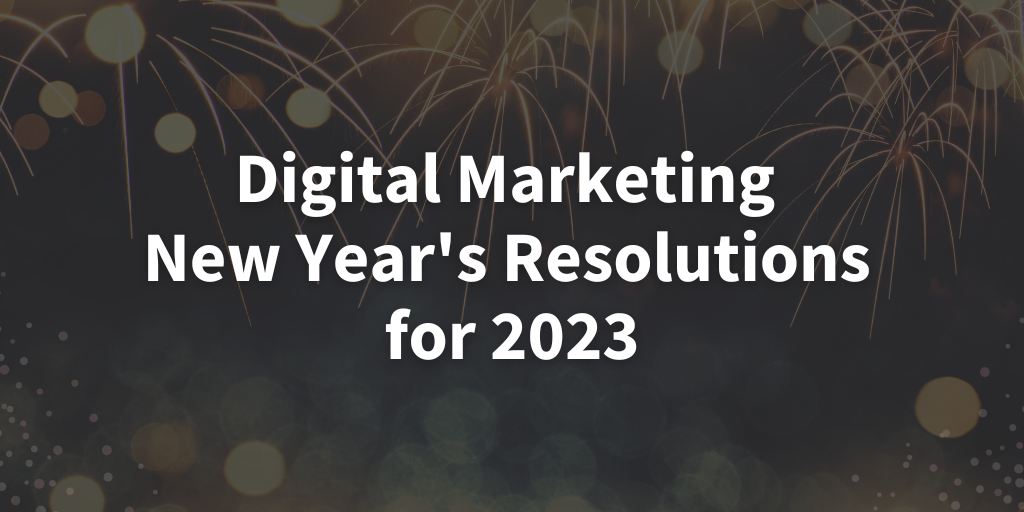
It’s almost that time of year again! As we say “bye” to 2022 and “hi” to 2023, it’s the perfect time to reflect on our business practices and think about ways to make positive changes for the coming year.
While they might seem campy, New Year's resolutions are a great way to reflect on the year that’s passed and plan to make positive changes in the coming 365 days.
Even though most people make New Year’s resolutions, only about 12% achieve them. Why? Because most people aren’t specific enough, or they don’t know how to track their progress or a variety of other reasons.
As the leader of a team invested in helping your business thrive online, I’ve put together a list of achievable digital marketing New Year resolutions based on the latest best practices for 2023.
What is a Digital Marketing Best Practice?
The reality is that there’s no “right” way to do digital marketing, but by leaning on the experts and looking at the data, we can create recipes for success.
I lean on data and sources when developing a strategy for our clients. I use Feedly to keep tabs on the latest news and catch up daily on the latest trends and developments.
(If this sounds like too much work, I feel you. That’s why I started our weekly newsletter that you can subscribe to for all the top tips and updates in digital marketing!)
Best practices are how we make smart, informed decisions about our digital marketing, which is why all of the New Years’ resolutions listed below fall back on a foundation of data.
Ready to level up your online presence in 2023? Then take these resolutions to heart:
Develop Audience Personas
When I talk about a “persona,” I like to describe them as “fake versions of real people” because that’s what they are.
Sure, you might know who your customers are in your head, but taking the time to document and understand them can lead to a 73% increase in all opportunities from online marketing!
Personas help us understand the specific needs that your customers or clients may have on a granular basis and vary depending on whether you have a B2B (business-to-business) or B2C (business-to-consumer) business.
For example, if you run a B2B business, you may want to consider things like:
- What’s their role in the company?
- What kind of buying power do they have?
- How much can they spend?
- What do they care about? (How can we make them look good?)
- Do they need approval for extra spending?
- If yes, who are the other key stakeholders?
- Who are the other key stakeholders (they all need personas, too!)
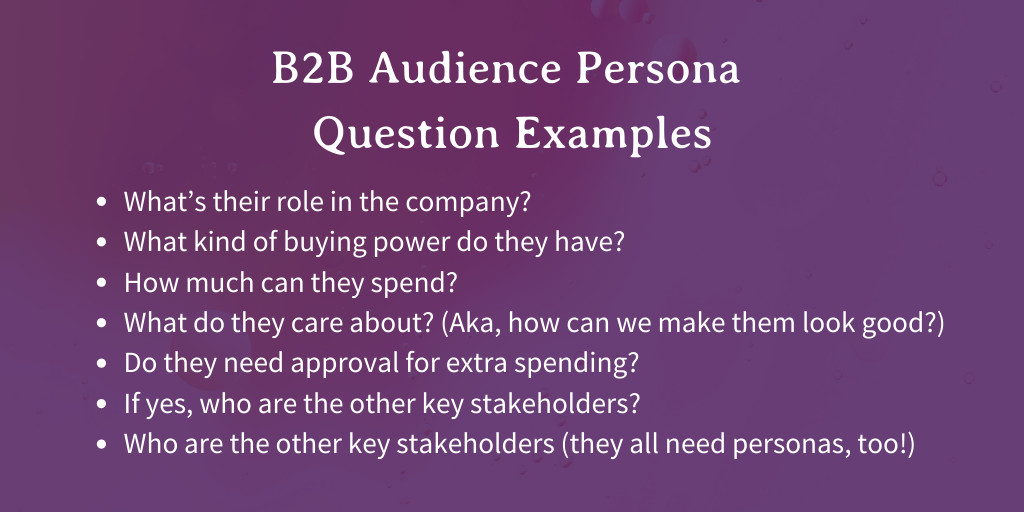
If you run a B2C company, you might want to consider things like:
- Their age, gender, and demographics?
- Their relationship status?
- Their annual income (if possible)?
- How much do they spend at once?
- Are they a repeat buyer? If so, when?
- Are they an impulse buyer, or do they wait for a sale?
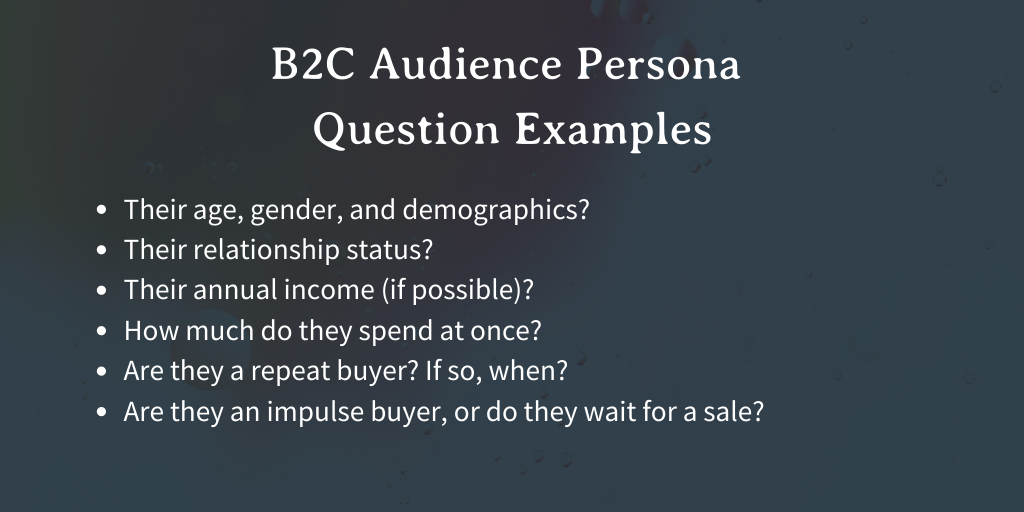
As you can see, personas can get pretty in-depth, which is good! The more you know about your customers and the people involved with how, when, and what they buy, the easier it is to write marketing copy that speaks to their needs.
Reintroduce Your Brand
People want to spend money on things that make them feel good, and one way you can encourage them to buy from you is by using your story in your digital marketing.
This isn’t about tricking people into buying from you! This is about telling a story in a non-salesy way about your brand, how it got started, and what motivates you to keep doing what you do every day.
If people love a brand story, 55% are more likely to buy the product in future, 44% will share the story, and 15% will buy the product immediately.
Talking candidly about how your company got started is a way to create empathy and put a “human” face on your brand, which helps prospective customers and clients empathize with you.
Business is about forming relationships with people. Humans are emotional creatures, and creating a solid emotional connection by being candid and vulnerable will encourage people to support your business.
Be Platform-Specific in Your Content
Maybe the tl;dr version of this could be: stop cross-posting from other social media sources!
Every social media platform is unique. From the image ratios to where the text in a post gets cut off, it’s essential to understand the differences between the platforms and adjust your copy accordingly.
For example, Facebook and Instagram truncate (aka, cut the text off with “...”) after 125 characters, but LinkedIn truncates it after 140 characters.
This means you have a little more space to showcase your core messaging on LinkedIn, so don’t copy/paste the same content to all three.
People also have expectations about the type of content they see on social networks. LinkedIn, for example, is a more business-focused platform, so gifs and terms like GOAT might not resonate with people there as much as they would on a more laid-back platform like Twitter.
Upload More Videos
Confession time: I hated shooting Reels when they started becoming popular.
I’m a writer by trade, and I prefer to do exactly what I’m doing: sit behind a desk with a coffee typing out my thoughts… but that’s not how social media works anymore.
The average user attention span in 2022 was just 8 seconds, and video is the easiest way to stop someone mid-scroll. 80% of consumers want to see more videos from businesses.
Since TikTok exploded onto the scene, it’s time to start getting comfortable in front of the camera and posting video content to all your social platforms.
If you’re feeling overwhelmed with the thought of getting into video (I get it), here are a few things to keep in mind:
- “Raw” videos do best. People like videos that are less edited and feel natural.
- Shorter videos do best. As I said, people’s attention spans are short, so play to this!
- Don’t be afraid to be goofy or silly. The fastest way to make a boring video is to take it too seriously, so have fun with it.
- Don’t overthink it. Really! Content moves fast on the internet, so nobody will penalize you even if you make a less-than-stellar video.
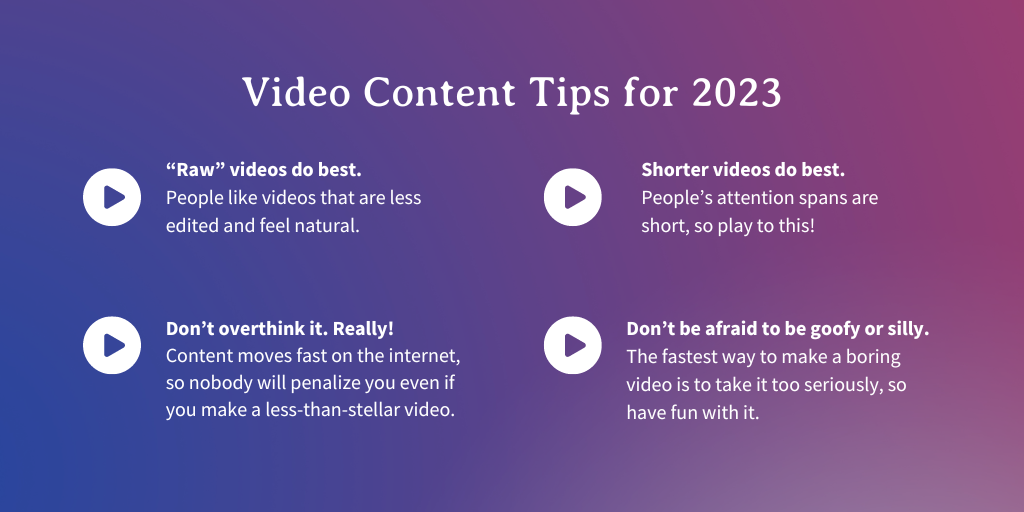
Do a Digital Marketing Audit
It’s never a wrong time to take a critical look at your online presence, and the start of the year offers the perfect opportunity to recognize where you’re doing great and where you could step things up.
How deep your digital marketing audit goes depends on a lot of factors, but here are some things to consider:
- Your audience personas and where they spend time
- The type of content you share on social media
- The strategies you use to publish that content
- Your page growth and outbound engagement strategies
- Your content strategy (blogs, newsletters, etc.)
If you’re unsure where to start, I specialize in digital marketing audits, so feel free to give me a shout, and we can get started!
Review Your Hashtag Strategy
Hashtag strategies change depending on the social network you’re posting to, so it’s essential to review your hashtag strategy and adjust it regularly.
For example, even though technically Instagram allows up to 30 hashtags, the latest research finds that the optimal number of hashtags is between 3 — 5 per post.
For Twitter, the platform suggests sticking to 1-2 targeted hashtags and actively discourages using brand slogans as hashtags.
Another hashtag best practice is only to use hashtags that relate to the content in your post. For example, don’t post about your brand new campaign and use the #ootd (Outfit of The Day) just because it’s a popular hashtag.
At Starling Social, we use a “blended” hashtag strategy. Not sure what that is? Drop us a line, and we can chat about the best hashtag strategy for your brand.
Document Your Digital Marketing Strategy
I firmly believe that documenting our thoughts is how we maintain clarity and consistency in our actions.
Documentation that explains our thinking and process and helps keep everyone on the same page.
It’s also a “power move” if you’re a 100% remote agency like we are at Starling Social since everyone on our team and our client’s teams can access important information.
From a business perspective, effective documentation can give you a leg-up on the competition since only 48% of smaller organizations and 41% of larger companies document their strategies.
Invest in Digital Ads
Getting eyeballs on your website and organic (unpaid) social media posts is more challenging than ever, which makes 2023 the ideal time to start investing in ads to help more clients and customers find your brand.
When it comes to digital ads, there are two “high-level” options to choose from:
Pay-Per-Click (PPC) Advertising
Pay-per-click ads are shown on search engine results pages (SERPs) on sites like Google and Bing.
These ads effectively reach consumers at the bottom of the sales funnel because they’re actively searching for the item or service you offer.
This makes it easier to convert them (aka, get them to buy) because the fact that they’re searching for it shows intent to buy.
Another aspect of PPC advertising is retargeting. Once someone has taken an action on your site like clicking a link or adding something to their cart, you can remind them about that item by showing them retargeting ads on other places around the internet.
Almost 70% of customers “abandon” the items in their carts, but retargeting ads can bring back 26% of those shoppers and get them to complete their purchase.
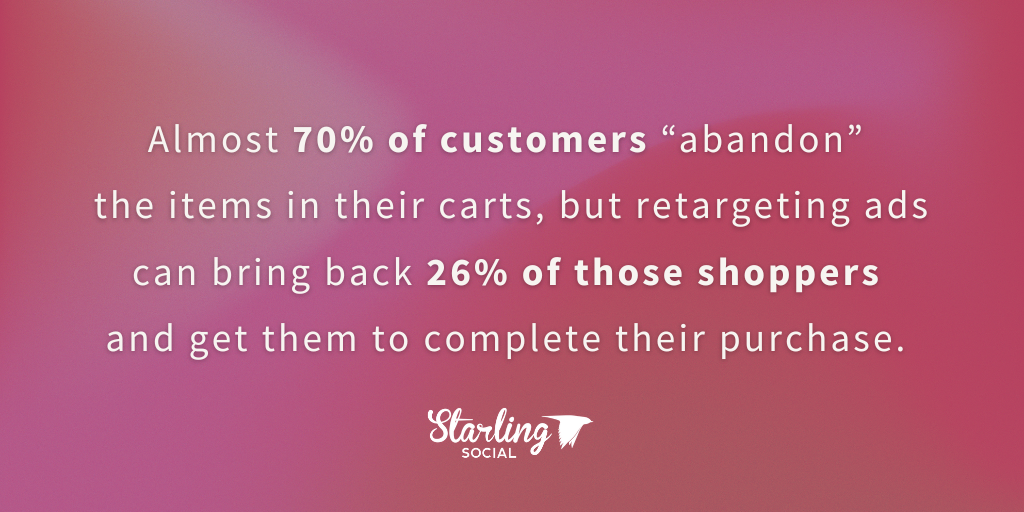
Social Media Ads
Social media ads are a great way of generating brand awareness! Half of adult internet users say that when brands use their data in advertising, it helps them discover (50%) and find (49%) products and services that interest them.
Not only are social media ads effective at helping introduce (or reintroduce) consumers to your brand, but you can also run retargeting campaigns on social media platforms where your audience is most active.
Lean Into Email Marketing
I like to say that “getting someone’s email is like getting the spare key to their house” because it allows your brand to connect with people in the most private place online: their inbox.
I’ve been talking about social media trends and how to stand out in increasingly crowded digital spaces, but email offers a great way to help potential customers see your content.
Part of what makes email marketing so successful is how connected we are to our inboxes. For example, 58% of us check our first thing in the morning!
Whether you’re a B2B or a B2C business, connecting with your audience through their inbox can increase conversions by up to 3x compared to social media marketing.
Cart abandon emails are your besties if you’re a B2C company. More than 40% of all “cart abandon” emails get opened, and out of those opened, 21% of them received click-throughs.
For B2B businesses, newsletters are a great way to keep your audience in the know. If you’re unsure how to write ’em, check out this post!
Make Your New Years’ Resolutions Today
Setting goals for yourself is how you can build and grow your online presence in 2023. Review the points I’ve listed above, sit back, and ask yourself, “what else can I commit to doing so more of my ideal customers find my business?”
A new year is the perfect time to take an objective look at your digital marketing and make strategic, data-driven decisions to help you increase your bottom line in the coming year. If you’re not sure where to start, drop us a line! I’m always happy to chat.

